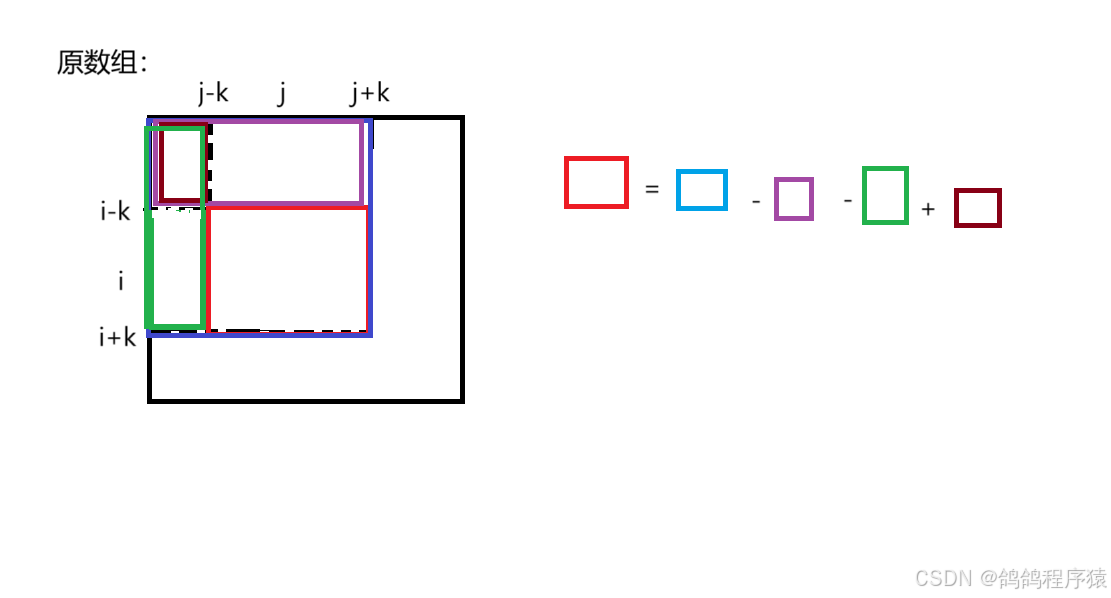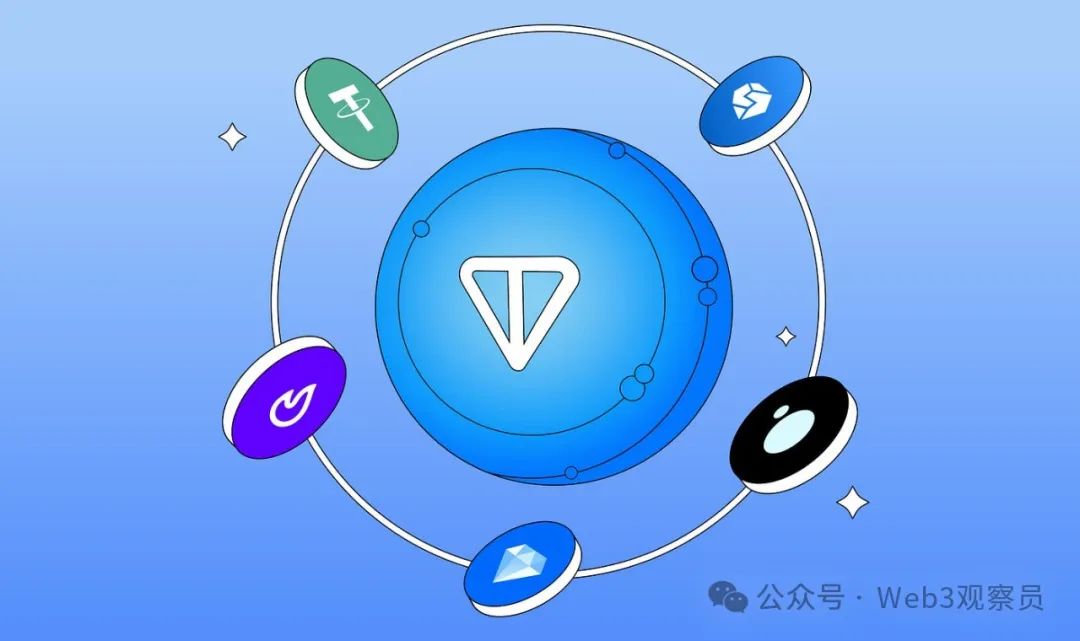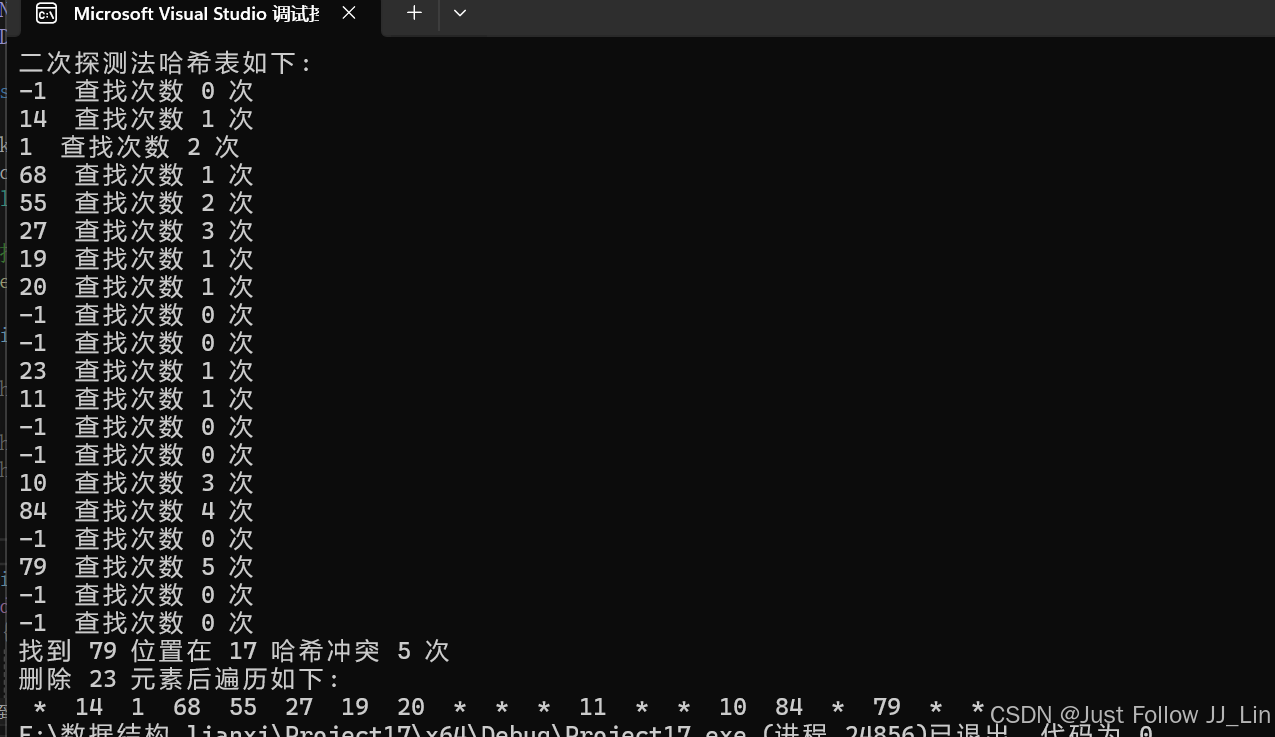以下是一些事件循环机制例子
0.两个例子先测下实力
async function async1 () {
await new Promise((resolve, reject) => { // 右边是Promise无需等待
resolve()
})
console.log('A')
}
async1()
new Promise((resolve) => {
console.log('B')
resolve()
}).then(() => {
console.log('C')
}).then(() => {
console.log('D')
})
// 最终结果👉: B A C D
解析:调用async1,有await等待一个promise没有返回值,跳出,console.log(‘A’)不执行。打印B,有.then把C放入微任务。现在执行await后面的打印A。之后在取出微任务的打印C,最后是D。结果就是B A C D
async function async1 () {
await async2()
console.log('A')
}
async function async2 () {
return new Promise((resolve, reject) => { // 从async视角等待2个then
resolve()
})
}
async1()
new Promise((resolve) => {
console.log('B')
resolve()
}).then(() => {
console.log('C')
}).then(() => {
console.log('D')
})
// 最终结果👉: B C D A
解析:执行async1, async1中await了async2, async2返回了Promise但是也是没有明确的值,跳出,console.log(‘A’)不执行。来到下面打印B,之后微任务放入C,(解释一下这个为什么没有打印A,跟上面哪里不一样?)取出微任务中的,打印C,之后打印D,最后打印A。⚠️这里与上面输出不同是因为,第二个
await后面跟的是一个async函数,是async函数就要根据它返回值的类型进行不同数目的微任务第二个例子中async2返回了一个Promise,根据结论,返回值为一个Promise的需要等待 2个then的时间,那么等待then©、then(D)两个后才会打印A。
1.async 函数返回值
在讨论 await 之前,先聊一下async 函数处理返回值的问题,它会像 Promise.prototype.then 一样,会对返回值的类型进行辨识。
👉根据返回值的类型,引起 js引擎 对返回值处理方式的不同
📑结论:
async函数在抛出返回值时,会根据返回值类型开启不同数目的微任务
return结果值:非thenable、非promise(不等待)
return结果值:thenable(等待 1个then的时间)
return结果值:promise(等待 2个then的时间)
例1:
async function testA () {
return 1; // 非thenable、非promise
}
testA().then(() => console.log(1));
Promise.resolve()
.then(() => console.log(2))
.then(() => console.log(3));
// (不等待)最终结果👉: 1 2 3
例子2:
async function testB () {
return {
then (cb) { // thenable
cb();
}
};
}
testB().then(() => console.log(1));
Promise.resolve()
.then(() => console.log(2))
.then(() => console.log(3));
// (等待一个then)最终结果👉: 2 1 3
例子3:
async function testC () {
return new Promise((resolve, reject) => { // promise
resolve()
})
}
testC().then(() => console.log(1));
Promise.resolve()
.then(() => console.log(2))
.then(() => console.log(3));
// (等待两个then)最终结果👉: 2 3 1
async function testC () {
return new Promise((resolve, reject) => { // promise
resolve()
})
}
testC().then(() => console.log(1));
Promise.resolve()
.then(() => console.log(2))
.then(() => console.log(3))
.then(() => console.log(4))
// (等待两个then)最终结果👉: 2 3 1 4
看了这三个🌰是不是对上面的结论有了更深的认识
稍安勿躁,来试试一个经典面试题👇
async function async1 () {
console.log('1')
await async2()
console.log('AAA')
}
async function async2 () {
console.log('3')
return new Promise((resolve, reject) => {
resolve()
console.log('4')
})
}
console.log('5')
setTimeout(() => {
console.log('6')
}, 0);
async1()
new Promise((resolve) => {
console.log('7')
resolve()
}).then(() => {
console.log('8')
}).then(() => {
console.log('9')
}).then(() => {
console.log('10')
})
console.log('11')
// 最终结果👉: 5 1 3 4 7 11 8 9 AAA 10 6
如果根据上面的结论来,这题应该没问题。
5 1 3 4 ,这里的promise需要等待2个then的时间。7也没问题。遇见.then8放进微任务, 打印11。从微任务队列取出打印8,9放进微任务,取出打印9,10放进微任务。至此等待的2个then已经完成。回到async1中将await async2()后面的打印AAA。取出打印10,最后是宏任务setTimeout中的6。
步骤拆分👇:
0.先执行同步代码,输出5
1.执行setTimeout,是放入宏任务异步队列中
2.接着执行async1函数,输出1
3.执行async2函数,输出3
4.Promise构造器中代码属于同步代码,输出4
async2函数的返回值是Promise,等待2个then后放行,所以AAA暂时无法输出5.
async1函数暂时结束,继续往下走,输出7
6.同步代码,输出11
7.执行第一个then,输出8
8.执行第二个then,输出9
9.终于等到了两个then执行完毕,执行async1函数里面剩下的,输出AAA
10.再执行最后一个微任务then,输出10
11.执行最后的宏任务setTimeout,输出6
2. await 右值类型区别
2.1、非 thenable(会立即向微任务队列添加一个微任务then,但不需等待)
🌰1:
async function test () {
console.log(1);
await 1;
console.log(2);
}
test();
console.log(3);
// 最终结果👉: 1 3 2
🌰2:
function func () {
console.log(2);
}
async function test () {
console.log(1);
await func();
console.log(3);
}
test();
console.log(4);
// 最终结果👉: 1 2 4 3
🌰3:
async function test () {
console.log(1);
await 123 // 非 thenable,无需等待
console.log(2);
}
test();
console.log(3);
Promise.resolve()
.then(() => console.log(4))
.then(() => console.log(5))
.then(() => console.log(6))
.then(() => console.log(7));
// 最终结果👉: 1 3 2 4 5 6 7
Note:
await后面接非 thenable类型,会立即向微任务队列添加一个微任务then,但不需等待
2.2、thenable类型(等待一个then 的时间之后执行)
async function test () {
console.log(1);
await {
then (cb) { // thenable需等待一个then时间
cb();
},
};
console.log(2);
}
test();
console.log(3);
Promise.resolve()
.then(() => console.log(4))
.then(() => console.log(5))
.then(() => console.log(6))
.then(() => console.log(7));
// 最终结果👉: 1 3 4 2 5 6 7
Note:
await后面接thenable类型,需要等待一个then的时间之后执行
2.3、Promise类型(同非thenable无需等待)
async function test () {
console.log(1);
await new Promise((resolve, reject) => { // 无需等待,但正常是2个then时间
resolve()
})
console.log(2);
}
test();
console.log(3);
Promise.resolve()
.then(() => console.log(4))
.then(() => console.log(5))
.then(() => console.log(6))
.then(() => console.log(7));
// 最终结果👉: 1 3 2 4 5 6 7
❓为什么表现的和非 thenable 值一样呢?为什么不等待两个 then 的时间呢?
Note:
- TC 39(ECMAScript标准制定者) 对
await后面是promise
的情况如何处理进行了一次修改,移除了额外的两个微任务,在早期版本,依然会等待两个 then的时间- 掘金上有大佬翻译了官方解释:更快的async 函数和 promises, 但在这次更新中并没有修改
thenable的情况
这样做可以极大的优化 await 等待的速度👇
async function func () {
console.log(1);
await 1; // 非 thenable,无需等待1个then
console.log(2);
await 2;
console.log(3);
await 3;
console.log(4);
}
async function test () {
console.log(5);
await func();
console.log(6);
}
test();
console.log(7);
Promise.resolve()
.then(() => console.log(8))
.then(() => console.log(9))
.then(() => console.log(10))
.then(() => console.log(11));
// 最终结果👉: 5 1 7 2 8 3 9 4 10 6 11
前面5 1 7没问题,正常要从微任务对列中拿出8,但是await func();中await 1; 非 thenable,无需等待1个then,所以先打印出了2。之后走的打印8,放入9。本来要打印9的,但是又到了await 2; 非 thenable,无需等待1个then,所以先打印出了3。之后取出打印9。以此类推,到await func();全部执行完。打印6,最后是11。
Note:
await和Promise.prototype.then虽然很多时候可以在时间顺序上能等效,但是它们之间有本质的区别。
1.
test函数中的await会等待func函数中所有的await取得 恢复函数执行 的命令并且整个函数执行完毕后才能获得取得 恢复函数执行的命令;
2.test函数的await此时不能在时间的顺序上等效then,而要等待到func函数完全执行完毕;
3.比如这里的数字6很晚才输出,如果单纯看成then的话,在下一个微任务队列执行时6就应该作为同步代码输出了才对。
所以我们可以合并两个函数的代码👇
async function test () {
console.log(5);
// 原来func()中的
console.log(1);
await 1;
console.log(2);
await 2;
console.log(3);
await 3;
console.log(4);
await null;
console.log(6);
}
test();
console.log(7);
Promise.resolve()
.then(() => console.log(8))
.then(() => console.log(9))
.then(() => console.log(10))
.then(() => console.log(11));
// 最终结果👉: 5 1 7 2 8 3 9 4 10 6 11
因为将原本的函数融合,此时的 await 可以等效为Promise.prototype.then,又完全可以等效如下代码👇
async function test () {
console.log(5);
console.log(1);
Promise.resolve()
.then(() => console.log(2))
.then(() => console.log(3))
.then(() => console.log(4))
.then(() => console.log(6))
}
test();
console.log(7);
Promise.resolve()
.then(() => console.log(8))
.then(() => console.log(9))
.then(() => console.log(10))
.then(() => console.log(11));
// 最终结果👉: 5 1 7 2 8 3 9 4 10 6 11
以上三种写法在时间的顺序上完全等效,所以你 完全可以将 await后面的代码可以看做在 then 里面执行的结果,又因为 async 函数会返回 promise 实例,所以还可以等效成👇
async function test () {
console.log(5);
console.log(1);
}
test()
.then(() => console.log(2))
.then(() => console.log(3))
.then(() => console.log(4))
.then(() => console.log(6))
console.log(7);
Promise.resolve()
.then(() => console.log(8))
.then(() => console.log(9))
.then(() => console.log(10))
.then(() => console.log(11));
// 最终结果👉: 5 1 7 2 8 3 9 4 10 6 11
可以发现,test 函数全是走的同步代码…
所以👉:async/await 是用同步的方式,执行异步操作
3.例子
例1:
async function async2 () {
new Promise((resolve, reject) => { // async返回值是非thenable,无需等待
resolve()
})
}
async function async3 () {
return new Promise((resolve, reject) => { // async返回值是promise需要等待2个then
resolve()
})
}
async function async1 () {
// 方式一:最终结果:B A C D
// await new Promise((resolve, reject) => { // 同非thenable无需等待,最新规定已经移除了等待2个then
// resolve()
// })
// 方式二:最终结果:B A C D
// await async2()
// 方式三:最终结果:B C D A
await async3()
console.log('A')
}
async1()
new Promise((resolve) => {
console.log('B')
resolve()
}).then(() => {
console.log('C')
}).then(() => {
console.log('D')
})
大致思路👇:
首先,async函数的整体返回值永远都是Promise,无论值本身是什么
- 方式一:
await的是Promise,无需等待- 方式二:
await的是async函数,但是该函数的返回值本身是非thenable,无需等待- 方式三:
await的是async函数,且返回值本身是Promise,需等待两个then时间
例2: 又搞不懂了?
function func () {
console.log(2);
// 方式一:1 2 4 5 3 6 7
// Promise.resolve() //拿到确切的func函数返回值undefined
// .then(() => console.log(5))
// .then(() => console.log(6))
// .then(() => console.log(7))
// 方式二:1 2 4 5 6 7 3
return Promise.resolve() // 拿到func函数返回值,但是并未获得具体的结果
.then(() => console.log(5))
.then(() => console.log(6))
.then(() => console.log(7))
}
async function test () {
console.log(1);
await func(); // 方式一 拿到确切值undefined等待了一个then
console.log(3);
}
test();
console.log(4);
步骤拆分👇:
方式一:
同步代码输出1、2,接着将log(5)处的then1加入微任务队列,await拿到确切的func函数返回值undefined,将后续代码
console.log(3);放入微任务队列(then2,可以这样理解)执行同步代码输出
4,到此,所有同步代码完毕
执行第一个放入的微任务then1输出5,产生log(6)的微任务then3执行第二个放入的微任务
then2输出3然后执行微任务
then3,输出6,产生log(7)的微任务then4
执行then4,输出7
方式二:
同步代码输出1、2,await拿到func函数返回值,但是并未获得具体的结果(由Promise本身机制决定),暂停执行当前async函数内的代码(跳出、让行)
输出4,到此,所有同步代码完毕
await一直等到Promise.resolve().then...执行完成,再放行输出3
方式二没太明白❓
function func () {
console.log(2);
return Promise.resolve()
.then(() => console.log(5))
.then(() => console.log(6))
.then(() => console.log(7))
}
async function test () {
console.log(1);
await func() // 没拿到确切值,await一直等到Promise.resolve().then...执行完成
console.log(3);
}
test();
console.log(4);
new Promise((resolve) => {
console.log('B')
resolve()
}).then(() => {
console.log('C')
}).then(() => {
console.log('D')
})
// 最终结果👉: 1 2 4 B 5 C 6 D 7 3
还是没懂?
继续👇
async function test () {
console.log(1);
await Promise.resolve() // 怎么算有确切值呢?
.then(() => console.log(5))
.then(() => console.log(6))
.then(() => console.log(7))
console.log(3);
}
test();
console.log(4);
new Promise((resolve) => {
console.log('B')
resolve()
}).then(() => {
console.log('C')
}).then(() => {
console.log('D')
})
// 最终结果👉: 1 4 B 5 C 6 D 7 3
这里也是懵
Note:
综上,await一定要等到右侧的表达式有确切的值才会放行,否则将一直等待(阻塞当前async函数内的后续代码),不服看看这个👇
function func () {
return new Promise((resolve) => {
console.log('B')
// resolve() 故意一直保持pending
})
}
async function test () {
console.log(1);
await func()
console.log(3);
}
test();
console.log(4);
// 最终结果👉: 1 B 4 (永远不会打印3)
// ---------------------或者写为👇-------------------
async function test () {
console.log(1);
await new Promise((resolve) => {
console.log('B')
// resolve() 故意一直保持pending
})
console.log(3);
}
test();
console.log(4);
// 最终结果👉: 1 B 4 (永远不会打印3)
例3:
async function func () {
console.log(2);
return { // 等待一个then
then (cb) {
cb()
}
}
}
async function test () {
console.log(1);
await func();
console.log(3);
}
test();
console.log(4);
new Promise((resolve) => {
console.log('B')
resolve()
}).then(() => {
console.log('C')
}).then(() => {
console.log('D')
})
// 最终结果👉: 1 2 4 B C 3 D
步骤拆分👇:
同步代码输出1、2
await拿到func函数的具体返回值thenable,将当前async函数内的后续代码放入微任务then1(但是需要等待一个then时间)
同步代码输出4、B,产生log(C)的微任务then2
由于then1滞后一个then时间,直接执行then2输出C,产生log(D)的微任务then3
执行原本滞后一个then时间的微任务then1,输出3
执行最后一个微任务then3输出D
其他例子:
setTimeout+Promise+Async输出顺序?很简单呀!
4.总结
4.1 async函数返回值
📑结论:async函数在抛出返回值时,会根据返回值类型开启不同数目的微任务
return结果值:非thenable、非promise(不等待)
return结果值:thenable(等待 1个then的时间)
return结果值:promise(等待 2个then的时间)
4.2 await右值类型区别
- 接非
thenable类型,会立即向微任务队列添加一个微任务then,但不需等待 - 接
thenable类型,需要等待一个then的时间之后执行 - 接
Promise类型(有确定的返回值),会立即向微任务队列添加一个微任务then,但不需等待- TC 39 对
await后面是promise的情况如何处理进行了一次修改,移除了额外的两个微任务,在早期版本,依然会等待两个then的时间
- TC 39 对
作者:Squirrel_
链接:https://juejin.cn/post/7194744938276323384
来源:稀土掘金
著作权归作者所有。商业转载请联系作者获得授权,非商业转载请注明出处。


















